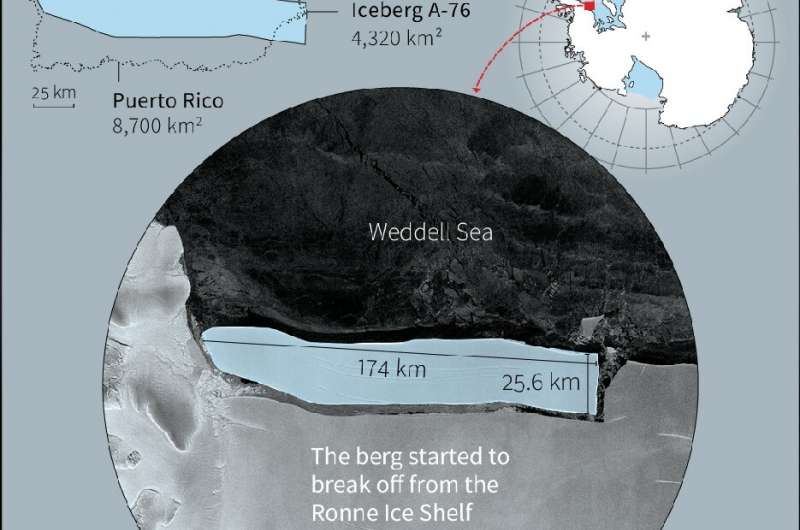
A huge iceberg, the world’s largest, has broken off from an ice shelf in Antarctica and is floating through the Weddell Sea, the European Space Agency (ESA) said.
Called A-76 and roughly the shape of Manhattan but more than 70 times bigger, it was picked up on satellite images and is “currently the largest berg in the world”, the ESA said Wednesday.
The iceberg is around 170 kilometres (105 miles) long and 25 kilometres wide, with an area of 4,320 square kilometres, slightly larger than the Spanish island of Majorca.
The berg, which broke off the western side of the Ronne Ice Shelf, was originally spotted by the British Antarctic Survey and confirmed using images from the Copernicus satellite.
It takes the place as the world’s largest from the A-23A iceberg — approximately 3,880 sq km in size — which is also in the Weddell Sea.
Earth’s average surface temperature has gone up by one degree Celsius since the 19th century, enough to increase the intensity of droughts, heatwaves and tropical cyclones.
A process known as hydrofracturing was likely the main culprit in both cases, earlier research has shown.
Hydrofracturing occurs when water -– which is heavier than ice –- pours through cracks in the surface of ice shelves caused by surface warming, violently forcing the fractures to zip open, causing an iceberg to break off.

